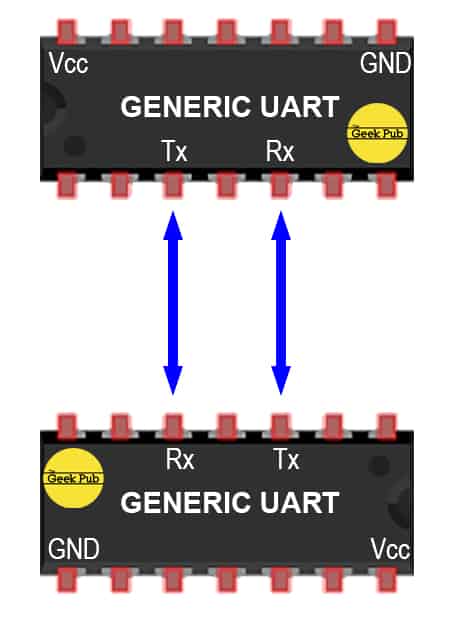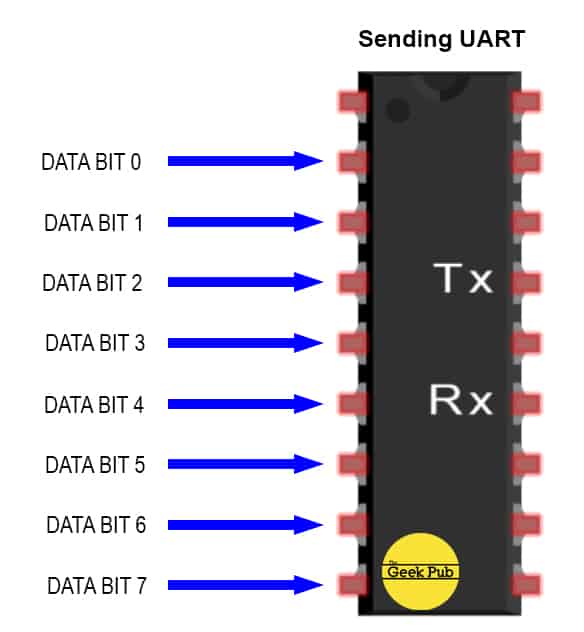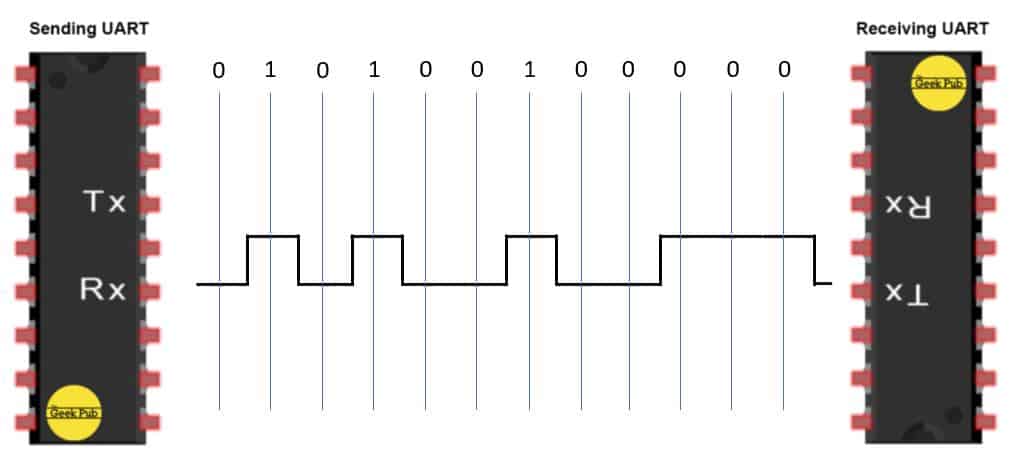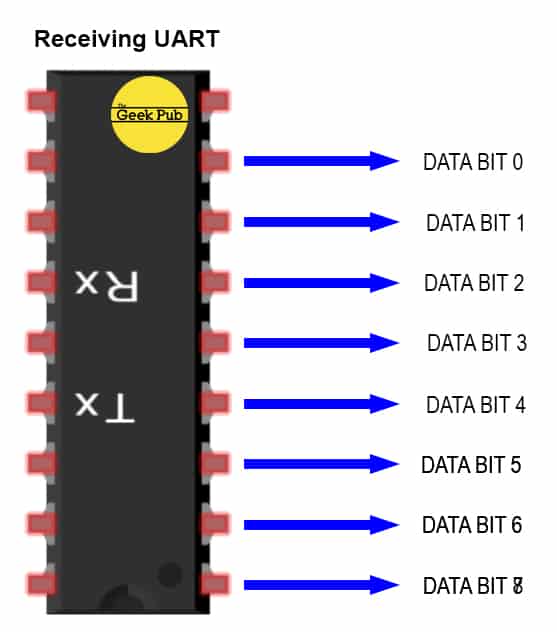Most orders for IN STOCK items placed by 12PM CST M-F ship SAME DAY. Orders for custom items and prints may take additional time to process.
In this tutorial let’s talk about UART communications basics! A UART (short for Universal Asynchronous Receiver/Transmitter) is an electronic component that you’ll find in all sorts of electronics. UARTs have been around since the early days of PCs and were mostly associated with MODEMs of the time because a high quality MODEM would of course need a high quality UART. The UART could be a standalone integrated circuit, or included as part of a larger multi-function IC.
UARTs are still in use today in many types of electronics including the
 For UARTs to be of any value there must be two of them. UARTs talk to each other. They can be different types, one standalone and one integrated, etc. But for communications to happen they work in pairs. For the more advanced who will point this out, it is possible to emulate a UART in software using a CPU or a micro-controller . That’s beyond the scope of this article, as we’re focusing on UART communications basics here.
For UARTs to be of any value there must be two of them. UARTs talk to each other. They can be different types, one standalone and one integrated, etc. But for communications to happen they work in pairs. For the more advanced who will point this out, it is possible to emulate a UART in software using a CPU or a micro-controller . That’s beyond the scope of this article, as we’re focusing on UART communications basics here.
The UARTS communicate by connecting the Tx pin (transmit pin) of one UART to the Rx pin (receive pin) of the other UART (in both directions). This two wire loop forms the fundamental circuit that the UARTs operate on. (Depending on the actual use of the UART it my be wise for them to also have a shared ground.) Data flows from the transmit pin on one UART to the receive pin on the other.
If you’ve been around electronics for a while you might have heard of something called a baud rate. Since UARTs don’t use a clock line commonly used in other serial communications methods (such as I2C or SPI), it requires that both UARTs talk at the same speed. This also means that speed must be manually defined at both ends. This is why in the Arduino IDE’s serial monitor there is a drop down box to change the speed! Baud rate is measured in bits per second. Since not every chip is timed exactly UARTs allow for a 5% variation in baud rate by design. Anything deviation greater than this and data is likely to be corrupted in transit.
Once a baud rate is set on both ends the transmitting UART will send a start bit before beginning transmission and a stop bit at the end of the transmission.
Our UART is going to receive data in parallel form on its bus pins. The UART will internally serialize this data set and transmit it as a packet bit by bit over its Tx pin. The second (or receiving) UART will read this packet on its Rx pin and then output the data on its data bus pins. Let’s go through the steps.
It’s also important to understand that the serial portion of the transmission between the Tx pin and Rx pin as packetized into a standard format. This packet varies depending on the type and design of the UART, but will follow the same basic design. A single start bit, followed by 5 to 9 data bits. At the end may be a party bit, followed by 1 to 2 stop bits. Here’s a handy UART packet diagram.
Let’s break those down so quickly, so that we understand their importance.
Much like other communications systems, there must be a mechanism for controlling the line and letting the receiving device know that a transmission is starting. The transmitting pin normally holds the line HIGH when idle. In order to indicate to the receiving UART that data is about to be sent, the transmitting UART pulls the line low for one clock cycle (based on the configured baud rate). This causes the receiving UART to start reading the bits of the data frame.
This is the actual data we’re transferring without any overhead. It can be variable length determined by if we’re using parity or not. Most UARTs send the least significant bit first, but this does vary some by design.
Party is a way of determining if data has been transmitted accurately. More precisely, its describes if a number is even or odd. The UART will add all of the bits of the frame up and determine wither they add up to an even number or an odd number. The receiving UART will check the parity against the data it received. If they don’t match, it knows the data frame is corrupted. Not all UARTs use parity bits. Additionally, using a parity bit will make the data frame shorter by one bit in most designs.
In order to communicate to the receiving UART that transmission is complete, the sending UART will bring the line HIGH for one or two clock cycles.
As we continue down our UART basics tutorial, it’s time to go over the communication process step by step.
STEP 1: The sending UART receives a data frame from the data bus in parallel format and adds the start, parity, and stop bits to the data frame.


 Final Thoughts on UARTs
Final Thoughts on UARTsAs we wrap up our final thoughts on UART communication basics, its probably a good idea to cover the pros and cons of these devices. They’re great tools to have in our tool chest, but they’re not right for every situation.
RELATED: How I2C Serial Works
If you like our content maybe consider upgrading to Premium. You’ll get access to
One Response
4.5